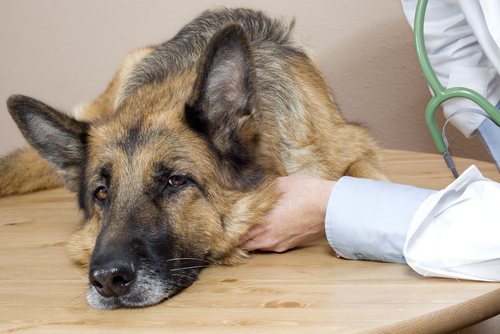
We try our best to keep our dogs as healthy and happy as we can, but it’s just not possible to know everything that can cause harm to them. Some things, however, are right under our noses and we may not even know it! Doing our best to keep them safe includes learning about the common things that can cause them harm. Often, we’re so focused on specific items that we might not be aware that actions can put them in danger as well. So what else can be risky to our dogs? Find out!
#1 – Obesity
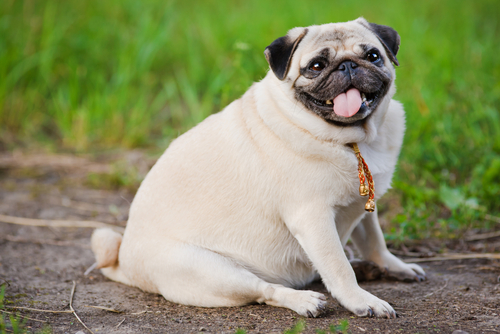
Obesity is one of the most common problems we see in dogs today. Many people are over-feeding their pets without even realizing. It’s important to understand what a healthy weight for your dog is, and why it’s important to maintain it! Obesity can lead to bone and joint problems, injuries, diabetes, cancer, and death. Make sure to get your dog the proper exercise and feed just enough food to keep him at a healthy weight.
#2 – Lack of Training
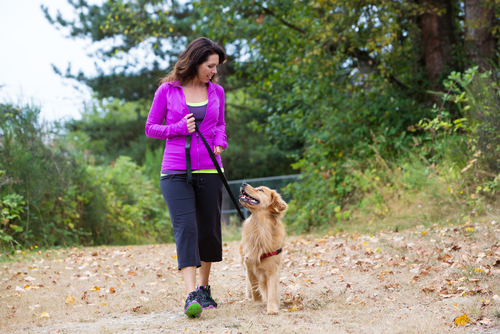
Many people want to skip training when they get new dogs, often because they don’t realize how much time and effort it takes to create a well-mannered pet. But training is an important part of keeping your dog happy and healthy. A large number of dogs that end up homeless and in shelters were surrendered because they lacked the proper training to make them acceptable house pets. Many people wait too long and feel overwhelmed with an untrained dog, and they feel they have no option but to give him up.
#3 – Leaving Your Dog Unsupervised
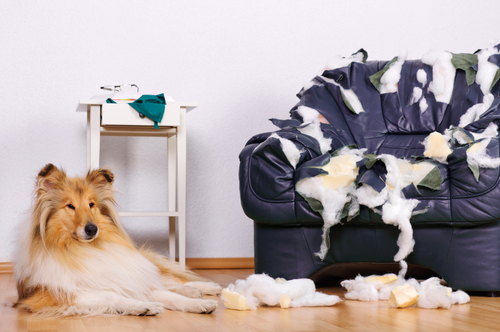
It’s completely normal and often necessary for us to leave our dogs unattended at some point. But it’s how and when we do it that makes the difference. Many young dogs have not yet learned what is appropriate to chew on or not to chew on, and any aged dog can get bored and destructive. Not only can they damage our homes, they can cause harm to themselves. Dogs that chew or ingest toxic items are at risk for serious trouble. They can also eat things that cause obstructions or injure their mouths and digestive tracts. It’s important to understand that all dogs need proper attention and exercise, and if you need to leave your young or active dog unattended, they may be best suited in a crate for their safety.
#4 – Feeding Unhealthy Table Scraps

We all love to share food with our dogs, and there are a lot of items that are perfectly safe to feed! But there are plenty of items that dogs should not have. We might think all meat is good for our dogs, since it’s the main part of our diet. But very fatty meats such as bacon or sausage can actually lead to upset stomachs, obesity, and pancreatitis. Other foods, such as grapes, onions, and macadamia nuts can also cause a wide range of problems from lethargy, digestive upset, liver failure, and even paralysis. So if you’re going to feed your dogs any table scraps, make sure they are safe and healthy.
#5 – Not Vaccinating
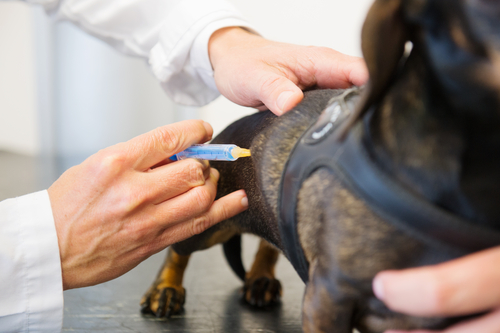
While over-vaccination is an issue that needs to be addressed, all young puppies should receive the proper vaccines for the area they live in. Too many vaccines are a problem, but we have them for a reason. The diseases we vaccinate against, such as distemper and parvovirus, are deadly diseases that pose serious threats to unvaccinated dogs – especially young puppies. Many litters have been lost to these terrible culprits, and it’s important to understand that we can’t know where our dogs can be exposed. So it’s always better safe than sorry, and important to have the necessary vaccinations given at the right time.
#6 – Not Microchipping
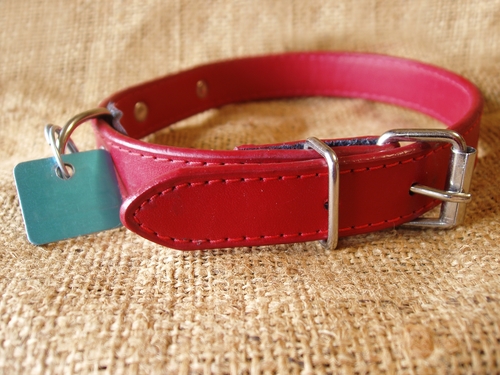
Thousands of pets get lost every year, and many of them never make it home. Collars and tags can fall off and get lost, leaving your pet unidentified and nowhere to be found. Microchips, however, and are excellent way to properly ID your pet without having to worry about it disappearing. It’s estimated that half of the dogs that end up in shelters are reunited with their owners due to microchipping. It’s cost effective and a life-long way of identifying your pet as your family member, so there’s really no reason not to do it.
#7 – Avoiding Regular Vet Check-Ups
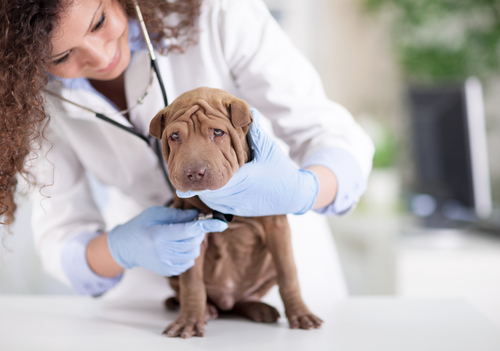
You don’t always need to run to the veterinarian every time your dog looks a little funny or has a day’s worth of diarrhea. But yearly vet check-ups are important for maintaining your dog’s health. Even if he seems healthy and there are no problems, a physical can make sure there are no underlying conditions that haven’t become symptomatic yet. Remember, always better safe than sorry, especially if the blood work can detect early stages of disease. When you catch problems early, you can treat them and ensure your pet lives a long, healthy life.
#8 – Ignoring Dental Health
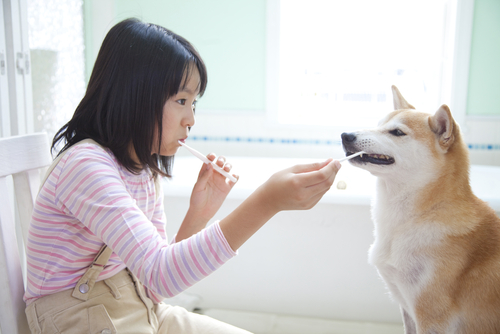
Dental health is something many owners don’t ever consider, but it’s so important! Brushing your dog’s teeth even weekly will greatly reduce the risk of dental diseases that can lead to other, larger problems. If you’re doing right by getting a yearly veterinarian check-up, you can easily squeeze in a yearly dental cleaning as well! Not only can bad oral hygiene cause painful tooth decay, the infections can spread to the kidneys, respiratory system, heart, and liver.
#9 – Poor Containment

We all know that accidents happen and dogs get loose, but these accidents should only happen once. So often we see dogs that escape their homes or yards time and time again. Not only are these dogs exposed to the dangers of wildlife, traffic, and simply getting lost, they might even attack other people or animals. We all like to think that our pets are friendly, but when they’re out alone they can become very territorial and scared, which leads to aggression. Remember that not only can you be held financially responsible for any damages done by your dog, aggression is often addressed by euthanasia – something we always hope to avoid.
#10 – Second-Hand Smoke Exposure
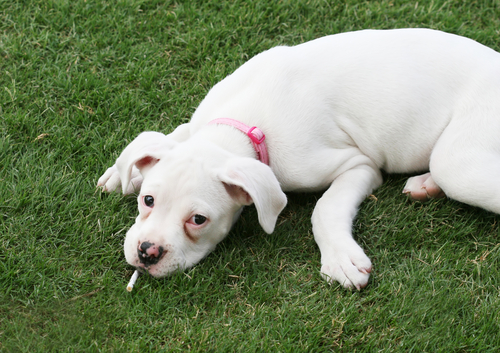
While we aren’t trying to give a public service announcement about the dangers of smoking, it is important to realize that second-hand smoke causes negative health affects on our dogs. It’s been found that long-nosed dogs that inhale the smoke have a higher incidents of nasal cancers, which have a very poor prognosis. Shorter-nosed dogs like Pugs and Bulldogs inhale the smoke completely, and have higher rates of lung cancer. Not only can they inhale the carcinogens, they can ingest them by licking their fur after the smoke has settled on it. Smoke can also cause eye irritation, coughing, and wheezy – just like a human smoker.
